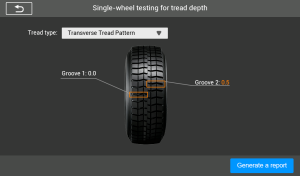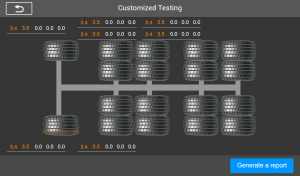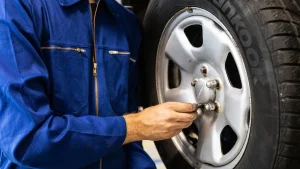
Neglecting truck maintenance can cause big money problems. You might have higher repair costs, safety risks, and lost work time. For example, average fleet maintenance costs can be about $12,500 for each vehicle every year. Ignoring maintenance affects 84% of commercial fleets, causing extra costs. The cost of neglect often leads to more repair bills, surprise medical costs, and even legal issues. Focusing on regular maintenance can save you thousands of dollars and help your business run well.
Key Takeaways
Taking care of your truck can save you 12%-18% in costs.
If you ignore maintenance, your truck may break down suddenly. This can cost you $448 each day in lost money.
A good maintenance plan helps you avoid costly repairs. It also keeps your trucks safe and dependable.
Doing maintenance before problems happen can cut emergency repairs by up to 50%. This saves you both time and money.
Making a maintenance schedule and checklist helps your trucks stay in great shape and follow the rules.
Repair Costs and the Cost of Neglect
Emergency Repair Expenses
Ignoring maintenance can lead to expensive emergency repairs. When you skip regular checks, you risk unexpected problems. These issues can cost between $500 and $3,000. Here are some common emergency repair costs you might face:
Unexpected Issues: 10-20% of your total repair costs
Emergency roadside repairs
Accident-related damages
Surprise repairs and breakdowns can really disrupt work and raise maintenance costs, even if you do regular preventive maintenance. Sudden problems like engine issues, electrical failures, or transmission troubles often need quick fixes. This leads to higher repair costs and more downtime.
Bad maintenance habits cause more emergency repairs in fleets. In fact, avoidable mechanical failures make up nearly 37% of all roadside breakdowns. Waiting until something breaks means more emergency repairs and unplanned downtime. This cycle can quickly empty your budget.
Long-term Financial Impact
The long-term money problems from ignoring maintenance can be serious. A simple $60 oil change can turn into a $6,000 engine issue if you ignore it. Here are some important points to think about:
Roadside failures can cost $350 to $700 for each emergency repair call.
Renting a replacement truck during repairs can cost up to $3,000 each month.
Skipping a $100 oil change could lead to a $10,000 engine rebuild.
Unplanned maintenance can cost 3 to 9 times more than scheduled preventive maintenance. Each hour of downtime can mean about $448 in lost income. For a fleet of 1,000 vehicles, just five unscheduled downtime events per vehicle each year can lead to almost $600,000 in losses.
A 2023 report from The American Transportation Institute (ATRI) shows that repair costs have gone up by 12%. Not doing maintenance often leads to higher vehicle repair costs, which hurts overall profits.
To show the difference between maintenance methods, look at this table:
Maintenance Strategy | Total Cost Over 5 Years | Key Issues Encountered |
|---|---|---|
Proactive Maintenance (Bus A) | $27,500 | Rare major breakdowns, predictable costs |
Reactive Maintenance (Bus B) | Much higher due to delayed maintenance | Major repairs, like transmission failure, costing over $9,000 and downtime expenses. |
By putting money into regular maintenance, you can avoid the rising repair costs that come with neglect.
Safety Risks and Legal Liabilities

Not taking care of truck maintenance raises safety risks a lot. If you don’t keep your vehicles in good shape, you put yourself and others in danger of accidents. Bad brakes, tires, and lights can cause sudden breakdowns while driving. These dangers can lead to serious injuries or even deaths.
Accidents and Their Costs
The money problems from accidents due to bad maintenance can be huge. For fleets that don’t maintain their trucks well, the average accident costs about $16,500. If someone gets hurt in an accident, this cost can jump to $74,000. In the worst cases, a fatal accident can cost up to $500,000.
Here’s a list of possible settlements based on how serious the injuries are:
Injury Severity | Settlement Range |
|---|---|
Moderate injuries | $50,000 – $200,000 |
Serious injuries needing surgery | $200,000 – $500,000 |
Severe cases causing major disability | $500,000 – $1,000,000 |
Catastrophic injury or wrongful death | Over $1,000,000 |
These numbers show why regular maintenance is important. Keeping your trucks in great shape can help you avoid expensive repairs and legal issues.
Department of Transportation Violations
Ignoring maintenance can also lead to trouble with the Department of Transportation (DOT). These troubles come with big fines. For example, brake problems can lead to fines that change based on how bad they are. Here’s a list of common violations and their penalties:
Violation Type | Description | Penalty Amount |
|---|---|---|
Brake System Deficiencies | Brakes that are not adjusted or have damaged hoses | Varies based on severity |
Lighting Violations | Broken or missing lights and reflective devices | Varies based on severity |
Tire Violations | Tread depth less than 2/32 of an inch or flat tires | Varies based on severity |
Record Keeping Violations | Daily penalty increased from $1,544 to $1,584 | $1,584 per day |
Total Penalty for Violations | Maximum total penalty has risen to | $15,846 |
These fines can add up fast and hurt your finances. By focusing on maintenance, you can improve safety and protect yourself from legal troubles and money penalties.
Lost Productivity and Revenue
Not keeping up with regular maintenance can cause big losses in productivity and money. When your fleet is not working, you lose money. Trucking companies can lose between $448 and $760 each day for every vehicle that is down. This shows how much neglecting your fleet can hurt your business.
Cost of Fleet Neglect
Downtime often happens because of different maintenance problems. Some common issues are:
Tire problems (not enough air, misalignment, worn tread)
Battery and electrical failures (rust, old batteries)
Brake issues (worn pads, leaking fluid)
Cooling system problems (leaks, low coolant)
Fuel system troubles (clogged filters, bad fuel)
Engine issues (not changing oil, ignoring warning lights)
Transmission and clutch failures (low fluid, worn parts)
Suspension and steering problems (damaged shocks, misalignment)
These issues can keep vehicles out of service for a long time, which hurts your profits.
Daily Downtime Costs
Every hour a truck is not working means losing about $448 in revenue. If several trucks are down, the money lost can add up fast. For example, if five trucks are out for one day, you could lose between $2,240 and $3,800.
Downtime also affects how happy your customers are. If you can’t deliver goods on time, customers get upset. This can hurt your company’s reputation. Unhappy customers might tell others, which can scare away new clients. If downtime happens often, customers may look for other options, leading to fewer contracts and more money lost.
To show the differences in costs, look at this table:
Cost Factor | Neglected Fleets | Well-Maintained Fleets |
|---|---|---|
Maintenance Costs | Higher due to breakdowns | Lower due to routine care |
Fuel Efficiency | Poor, leading to higher costs | Better, reducing expenses |
Productivity Loss | Significant, up to $1,200/month | Minimal, vehicles available when needed |
By focusing on regular maintenance, you can reduce downtime and protect your income.
Importance of a Fleet Maintenance Schedule
Making a fleet maintenance schedule is very important. It helps keep your trucks in great condition. Regular maintenance has many benefits. These benefits can save you money and improve how you work.
Regular Maintenance Benefits
Using a preventative maintenance program can really help your fleet. Here are some main benefits:
Benefit | Description |
|---|---|
Early Issue Detection | Regular maintenance finds small problems early. This stops them from becoming big repairs. |
Increased Reliability | A well-kept fleet is more dependable. This leads to better productivity and efficiency. |
Proactive maintenance helps save money overall. It is a smart choice. | |
Reduced Downtime | Less downtime means better productivity. Your fleet stays on the move. |
Lower Repair Costs | Preventive maintenance stops costly emergency repairs by fixing small problems early. |
Regular maintenance helps vehicles run better, saving money on fuel. | |
Increased Resale Value | Well-kept vehicles sell for more money, giving you better returns. |
Compliance with Regulations | Regular maintenance keeps you following safety and operation rules, helping you avoid fines. |
By focusing on these benefits, you can see how a good maintenance schedule leads to fewer breakdowns. More vehicles will be on the road. Following a regular maintenance schedule can cut emergency repairs by up to 50%. This helps you avoid stress and costs from unexpected breakdowns.
Creating a Maintenance Checklist
To make a good maintenance checklist, think about these important parts:
Component | Inspection Details |
|---|---|
Engine and Powertrain | Check oil level and condition. Replace oil if needed. Look at belts and pulleys for wear. |
Coolant System | Check coolant level and condition. Look for leaks or damage in hoses and radiator. |
Transmission and Differential Fluid | Check fluid levels and conditions. Look for leaks in lines. |
Fuel System | Change fuel filters as needed. Check fuel lines and tank for damage. |
Also, plan regular inspections based on how your fleet is used. For example, trucks on long trips may need different maintenance than those in stop-and-go traffic.
Avoid common mistakes when making your fleet maintenance schedule. Skipping regular checks can cause expensive breakdowns. Ignoring tire maintenance can lead to blowouts and accidents. Always keep detailed maintenance logs to track vehicle health and history.
By using a preventive maintenance plan, you can make your trucks last longer and get more money when you sell them. Taking care of your vehicles during their life is much smarter than paying for costly repairs before selling.
In short, keeping up with truck maintenance is very important for your fleet’s success. It helps you avoid expensive repairs and keeps everyone safe. Here are some important points:
Preventive maintenance can lower costs by 12%-18%.
Regular checks can save you up to ten times what repairs would cost if equipment fails.
Ignoring maintenance can lead to sudden breakdowns, costing you $448 each day.
By putting money into a good maintenance plan, you make sure deliveries are on time and improve reliability. This smart choice not only protects your money but also helps build better customer relationships. Make maintenance a priority to keep your fleet running well and efficiently! 🚚✨
FAQ
What are the signs that my truck needs maintenance?
Look for warning lights, strange noises, or poor performance. Check fluid levels and tire conditions often. If you see any of these signs, get maintenance right away to avoid expensive repairs.
How often should I perform maintenance on my truck?
You should do maintenance every 5,000 to 7,500 miles or follow your manufacturer’s advice. Regular checks help find problems early and keep your truck running well.
What are the consequences of neglecting truck maintenance?
Ignoring maintenance can cause higher repair costs, safety risks, and lost work time. You might deal with sudden breakdowns, accidents, and legal issues, which can hurt your finances a lot.
Can regular maintenance improve fuel efficiency?
Yes! Regular maintenance like oil changes and tire rotations can help your truck use less fuel. A well-kept vehicle runs better and saves you money over time.
How can I create an effective maintenance schedule?
Start by checking your truck’s manual for the manufacturer’s advice. Plan regular inspections, oil changes, and tire checks. Use a checklist to keep track of maintenance tasks and set reminders to stay on schedule.
See Also
The Importance Of Monitoring Tire Tread Depth For Safety
Using A Tire Tread Depth Gauge For Precise Measurements
Understanding Smart Tire Tread Depth Detectors And Their Functionality






